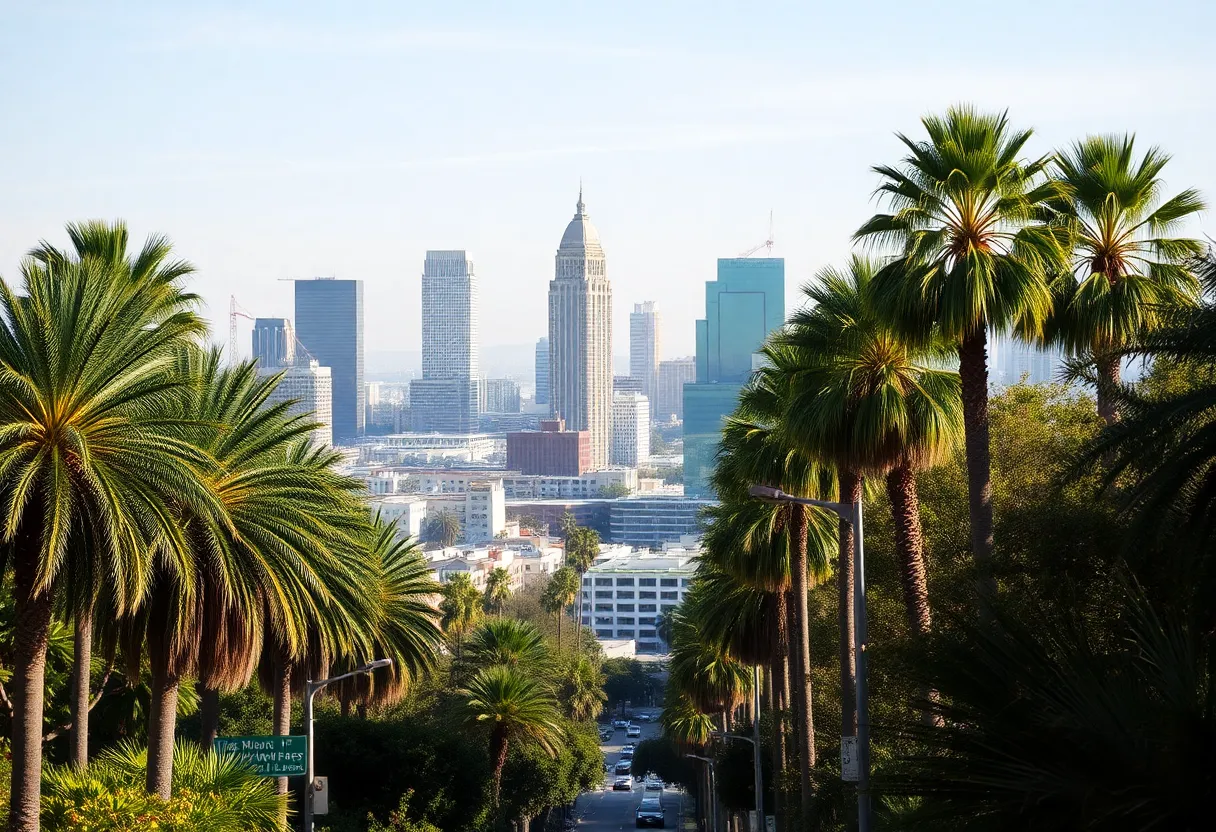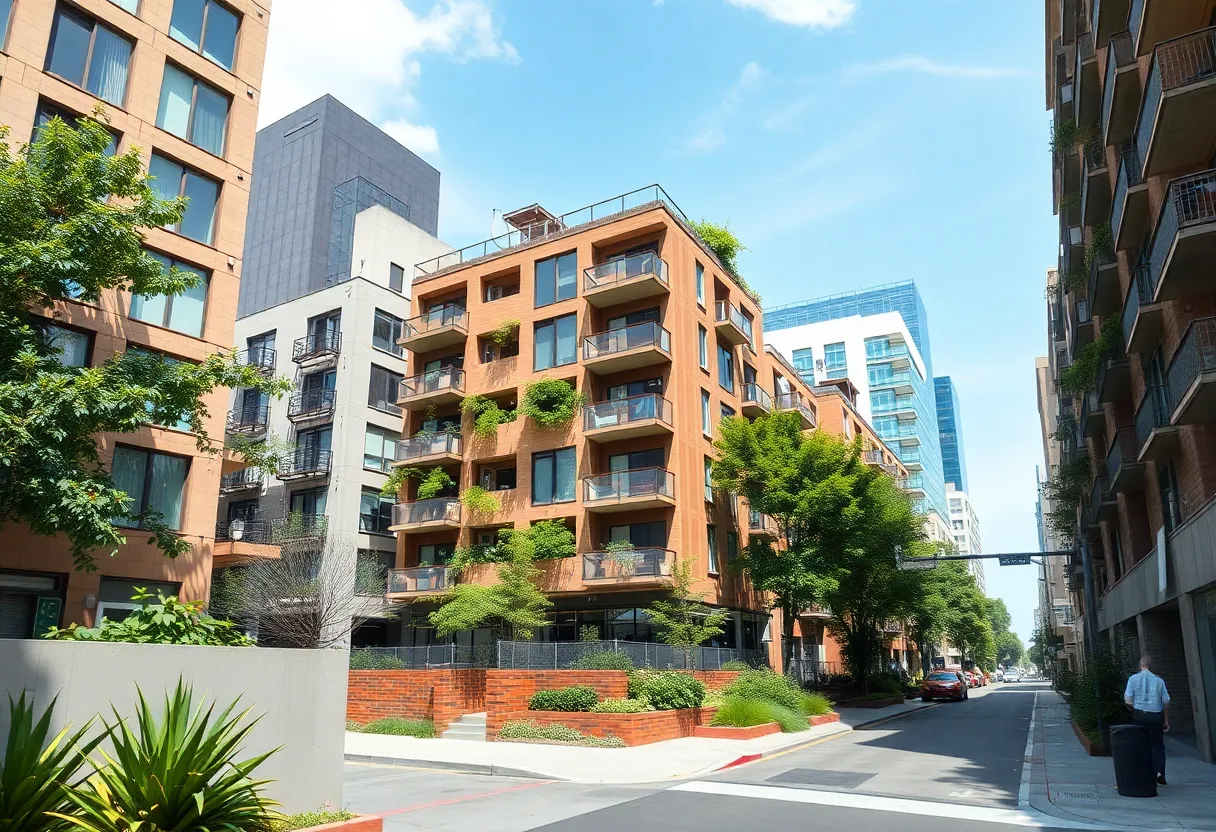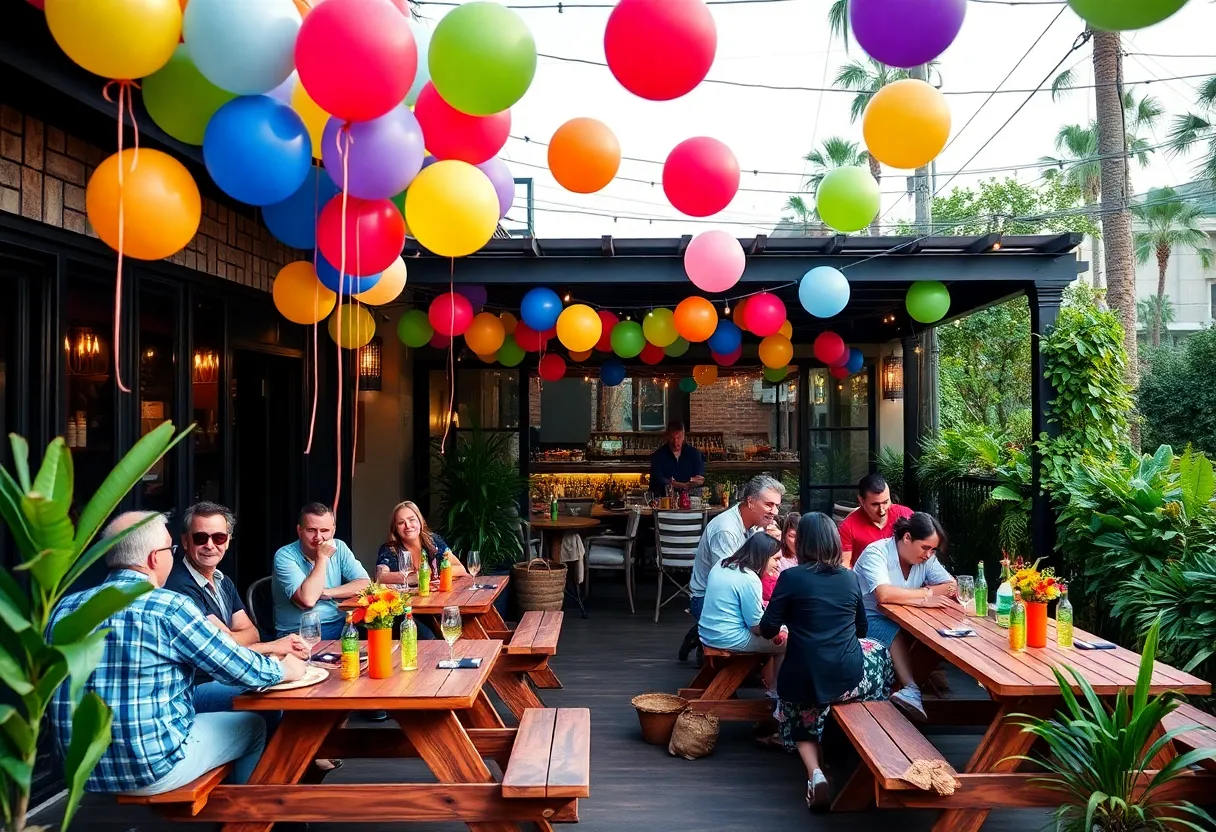News Summary
Los Angeles is experiencing a significant transformation as urban planners recognize that the city’s palm trees are nearing the end of their lifespan due to age, disease, and climate change. This shift has fueled debates over suitable tree replacements, focusing on native species that provide ecological benefits. As the city faces wildfires, drought, and infrastructure issues, the need for climate-adaptive trees has become increasingly critical. Experts advocate for alternatives like the jacaranda tree, which offers shade and supports biodiversity, as the city grapples with mixed public sentiments toward palm trees.
Los Angeles is facing a significant transformation as the city recognizes that many of its iconic palm trees are approaching the end of their lifespan due to age, disease, and the impacts of climate change. Urban planners and environmental groups are increasingly concerned about the viability of these trees, which have become synonymous with the Los Angeles landscape.
Though not all palm trees are dying immediately, city officials acknowledge that their time is limited. Thousands of palms have already been lost due to wildfires, drought, and natural aging processes. The aging population of these trees necessitates a shift in urban forestry strategies, prompting debates over which species should replace them.
The original landscape of Los Angeles was characterized by scrubland and grasses, rather than the palm-dominated urban forest seen today. The cultivation of palm trees began with Spanish missionaries, who introduced them for religious purposes. Later, marketing campaigns that promoted Southern California as an “American Mediterranean” solidified the palm’s place in the cultural and aesthetic identity of the region.
The City Beautiful movement, alongside the hype surrounding the 1932 Olympics, catalyzed a significant increase in palm tree planting, primarily for aesthetic reasons. However, as climate challenges escalate, urban planners and environmental organizations are urging cities to prioritize trees that offer greater ecological benefits rather than just visual appeal.
Most palm species currently prominent in the city are recognized as unsuitable due to their high water requirements, which strain local resources, and their limited ability to provide shade. Furthermore, palms can pose fire hazards, especially as they accumulate dried fronds. Experts in urban forestry emphasize the need for trees that fulfill ecological roles in addition to their ornamental value. Planting climate-adaptive species is recommended as a way forward.
There are increasing criticisms of palm trees, particularly regarding their limited cooling capabilities and potential fire hazards. Additionally, many palm trees are nonnative species that deplete water resources without providing adequate habitat or shading. This has led to discussions about better alternatives. Native species such as oaks, sycamores, black walnuts, desert willows, African sumac, and Chinese pistache provide more significant ecological support and cooler urban environments.
The jacaranda tree is highlighted as a promising alternative due to its rapid growth, ability to provide shade, and drought tolerance. The flowers of this species are also attractive to pollinators, thereby enhancing local biodiversity. As cities face lawsuits from sidewalk damages incurred by tree roots, there is an additional incentive to consider replacing palms with species that are less likely to disrupt urban infrastructure.
Current palm trees in Los Angeles have an average lifespan of around 100 years, and many of those currently thriving are noticeable in decline. The threat from invasive pests, such as the South American palm weevil, further jeopardizes palm populations, with the pest expected to reach Los Angeles in the near future.
Public sentiment around palm trees is increasingly mixed. While some citizens advocate for their removal due to fire hazards, health concerns, and cooling deficiencies, others cherish the historical and aesthetic value that palm trees contribute to the city landscape. This division illustrates the complexities involved in making informed decisions regarding urban forestry.
As heat waves become more frequent due to climate change, the focus of urban tree planting is shifting toward prioritizing native species that provide better habitats and cooling effects in urban settings. Continuous planting of palm trees, often driven by developers who wish to uphold the Southern California image, may need to be re-evaluated to accommodate the growing emphasis on climate-resilient species.
Deeper Dive: News & Info About This Topic
HERE Resources
Flagstar Financial Expands into Entertainment Sector
UFCW Union Reaches Tentative Agreement to Avert Strike
Los Angeles Concert Lineup Unveiled for June
Weekend Dining Guide: Los Angeles Restaurants to Try
Los Angeles Bagel Scene Flourishes with Culinary Innovation
Deadly Explosion Rocks Palm Springs Fertility Clinic
Los Angeles Homeowners Sue Insurance Giants Over Coverage Denial
Homeowners Unite Against Insurers in California: A Battle for Fair Coverage
Additional Resources
- Los Angeles Times: Prepare to Say Farewell to Los Angeles Palm Trees
- AOL: Commentary – Prepare for a Frond Farewell to Los Angeles Palm Trees
- Governing: Is it Time to Say Goodbye to Palm Trees in L.A.?
- SFGate: The Los Angeles Palm Tree Problem
- Washington Post: Palm Trees in L.A. and the Threat of Wildfires
- Wikipedia: Palm tree
- Google Search: California Palm Trees
- Google Scholar: Urban Forestry
- Encyclopedia Britannica: Palm
- Google News: Los Angeles Palm Trees

Author: STAFF HERE HOLLYWOOD
The Hollywood Staff Writer represents the experienced team at HEREHollywood.com, your go-to source for actionable local news and information in Hollywood, Los Angeles County, and beyond. Specializing in "news you can use," we cover essential topics like product reviews for personal and business needs, local business directories, politics, real estate trends, neighborhood insights, and state news affecting the area—with deep expertise drawn from years of dedicated reporting and strong community input, including local press releases and business updates. We deliver top reporting on high-value events such as the Hollywood Bowl summer concerts, the Hollywood Christmas Parade, film premieres at TCL Chinese Theatre, and festivals at the Magic Castle. Our coverage extends to key organizations like the Hollywood Chamber of Commerce and Visit Hollywood, plus leading businesses in entertainment, dining, and tourism that define the local economy. As part of the broader HERE network, including HERELosAngeles.com, HEREBeverlyHills.com, HEREAnaheim.com, and HEREHuntingtonBeach.com, we provide comprehensive, credible insights into Southern California's dynamic landscape.





